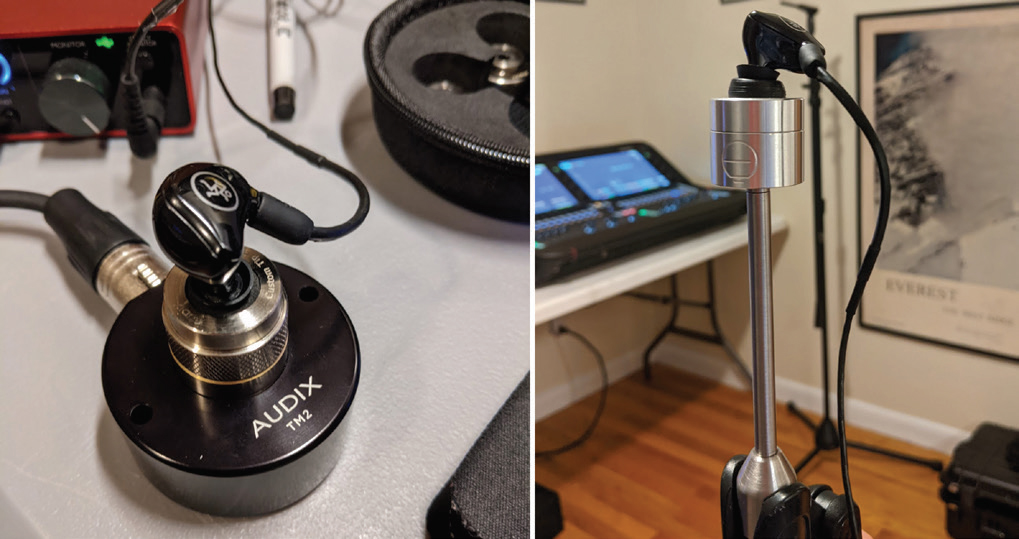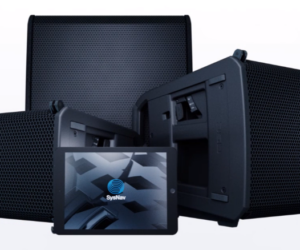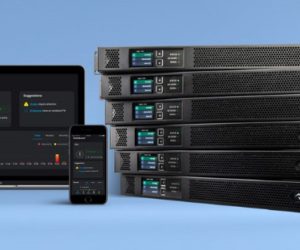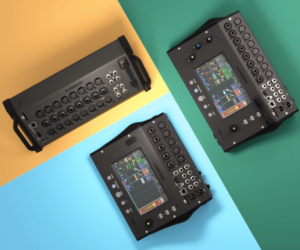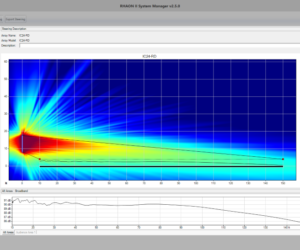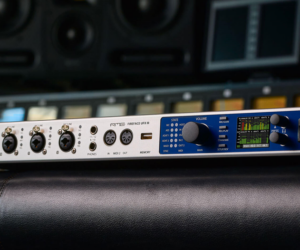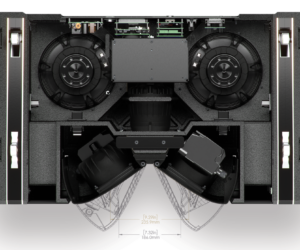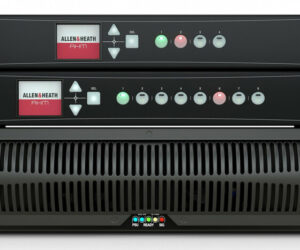I spent some time recently working with the new Audix TM2 and the SLS-Audio MiEMi, two tools designed to foster measuring in-ear monitors (IEM) with an audio analyzer. Note that this isn’t intended to be an exhaustive or official review, just my initial impressions.
The MiEMi is an aluminum coupler designed specifically for use with the iSemCon EMX-7150 measurement microphone (which works out well because the EMX-7150 is my go-to for measurement work). There’s also a less expensive, 3D-printed version of the coupler that is sold to fit a variety of other mic sizes and is, according to the company website, less accurate. The rubber coupler is easily replaceable. You fold the coupler in on itself and then press the IEM in.
The TM2 is a stand-alone measurement coupler, which means its measurement mic is built into the unit itself. Connect an XLR cable to the base and engage phantom power on your interface. It ships with several different adapters – “small” and “large” for measuring two standard sizes of IEM nozzles without the eartips attached, a “custom” adapter for measuring with the eartips attached and/or measuring custom molded IEMs, and a fourth that fits to the standard half-inch diameter acoustic calibrator for calibrating the TM2 for SPL measurement. These come in a zip case that also holds the TM2.
The TM2 also comes with a printout of the unit’s frequency response deviation from the benchmark unit, done with an Audio Precision analyzer, and a USB keydrive containing the corresponding correction file. The deviations were all less than +/- 1 dB below 8 kHz (above 8 kHz, IEM measurements get really tricky due to coupler resonances and insertion variance, so I’m not usually paying a ton of attention to the top octave.). Figure 1 shows the correction curve from the particular unit I tested.

Testing… Testing…
With both of these units, users set up the coupler as a measurement input to the analyzer and utilize a loopback for the reference signal, just as one would with a typical dual-channel measurement setup. The only difference is that we also need to drive the IEMs themselves via the IO’s headphone output. It’s probably not a terrible idea to do an idiot-check validation transfer function measurement between the line level outputs and the headphone outputs on the interface and make sure that comes up flat before testing the IEMs themselves.
My two concerns with devices like this are accuracy (how close is this result to the actual response?) and precision (do I get the same answer every time?). This is where some of the guerilla do-it-yourself IEM test rigs fall flat.
I’ll answer both questions at once. Figure 2 shows the left side of my Mackie MP-240 IEMs (which are fantastic for the price) measured six times, three times each with each rig. We see that not only do we get the same answer each time, but both systems seem to agree (1/12-octave smoothing).
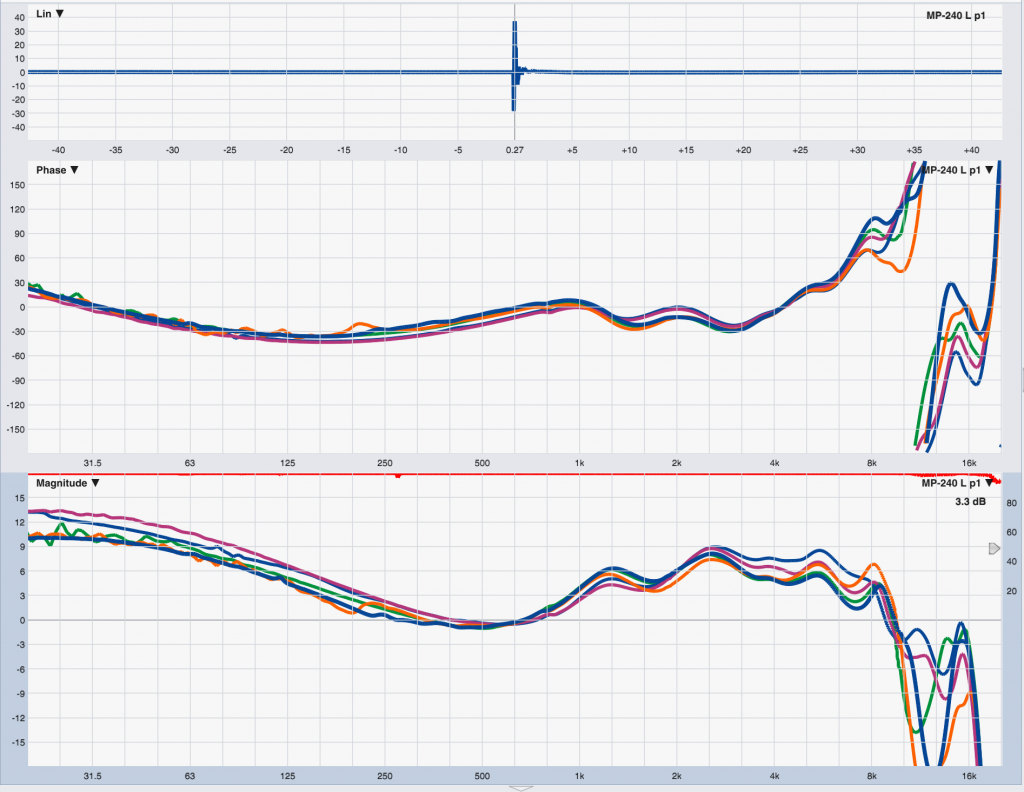
The trick is that even small variances in insertion can create significant differences at the frequency extremes (below 100 Hz and above 8 kHz or so). The MiEMi is definitely more fussy in this regard, and it took a little practice to be able to get repeated measurements. Meanwhile, the TM2 is more stable and seems to have a more robust grip on the IEM. It can help to provide some strain relief on the cable or to rest a thumb on the IEM to keep it in place during the measurement; however, be careful not to make any motions that would bump the mic. The TM2 is more forgiving in this aspect.

